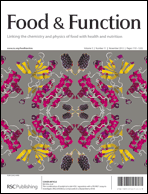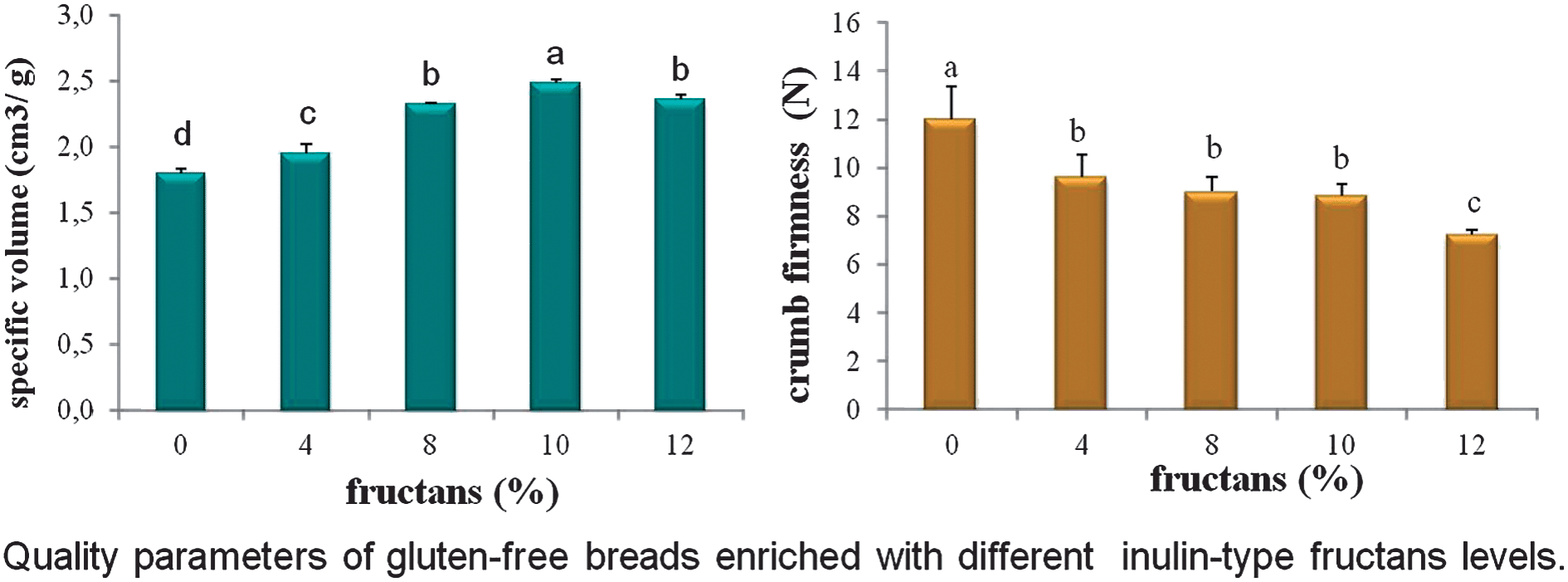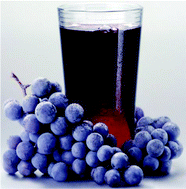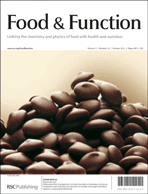This month sees the following articles in Food & Function that are in the top ten most accessed:-
Anti-inflammatory activity of natural dietary flavonoids
Min-Hsiung Pan, Ching-Shu Lai and Chi-Tang Ho
Food Funct., 2010,1, 15-31, DOI: 10.1039/C0FO00103A, Review Article
Transcription profiles of LPS-stimulated THP-1 monocytes and macrophages: a tool to study inflammation modulating effects of food-derived compounds
Wasaporn Chanput, Jurriaan Mes, Robert A. M. Vreeburg, Huub F. J. Savelkoul and Harry J. Wichers
Food Funct., 2010,1, 254-261, DOI: 10.1039/C0FO00113A
Nuts, especially walnuts, have both antioxidant quantity and efficacy and exhibit significant potential health benefits
Joe A. Vinson and Yuxing Cai
Food Funct., 2012, Advance Article, DOI: 10.1039/C2FO10152A
Review of in vitro digestion models for rapid screening of emulsion-based systems
David Julian McClements and Yan Li
Food Funct., 2010,1, 32-59, DOI: 10.1039/C0FO00111B, Review Article
Antitumor activity of mushroom polysaccharides: a review
Lu Ren, Conrad Perera and Yacine Hemar
Food Funct., 2012, Advance Article, DOI: 10.1039/C2FO10279J, Review Article
Effects of tea and coffee on cardiovascular disease risk
Siv K Bøhn, Natalie C Ward, Jonathan M Hodgson and Kevin D Croft
Food Funct., 2012, Advance Article, DOI: 10.1039/C2FO10288A
Mango fruit peel and flesh extracts affect adipogenesis in 3T3-L1 cells
Meng-Wong Taing, Jean-Thomas Pierson, Van L. T. Hoang, Paul N. Shaw, Ralf G. Dietzgen, Michael J. Gidley, Sarah J. Roberts-Thomson and Gregory R. Monteith
Food Funct., 2012,3, 828-836, DOI: 10.1039/C2FO30073G, Paper
Quercetin-3-O-glucuronide affects the gene expression profile of M1 and M2a human macrophages exhibiting anti-inflammatory effects
Eleonora Derlindati, Margherita Dall’Asta, Diego Ardigò, Furio Brighenti, Ivana Zavaroni, Alan Crozier and Daniele Del Rio
Food Funct., 2012, Advance Article, DOI: 10.1039/C2FO30127J, Paper
Capacity of peroxyl radical scavenging and inhibition of lipid peroxidation by ß-carotene, lycopene, and commercial tomato juice
Mizuki Takashima, Mototada Shichiri, Yoshihisa Hagihara, Yasukazu Yoshida and Etsuo Niki
Food Funct., 2012, Advance Article, DOI: 10.1039/C2FO30119A, Paper
Effects of eggs on plasma lipoproteins in healthy populations
Maria Luz Fernandez
Food Funct., 2010,1, 156-160, DOI: 10.1039/C0FO00088D, Review Article
Why not take a look at the articles today and blog your thoughts and comments below.
Fancy submitting an article to Food & Function? Then why not submit to us today or alternatively email us with your suggestions.
Comments Off on Top ten most accessed articles in August













 The front cover of this issue features work by
The front cover of this issue features work by 



